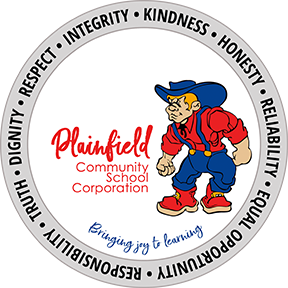Parents, you may want to ask your children this week if they’ve been coding at school, as schools around the globe marked Computer Science Education Week (@CSEdWeek) and #HourOfCode.
According to the associated website, CODE.org, recent efforts to encourage dedicated time each school year to coding projects is paying off. For example,
40% of U.S. students have accounts on Code.org
20M code.org students are young women
119M projects have been created on code.org
1M teachers are using Code.org
50 states support computer science
While there is a focus this week on coding, the truth is that Quaker students are exposed to coding and computer science nearly every week and at all ages. And as each Plainfield school works to achieve their STEM certification (PCMS earned the status in 2019), coding has become more of a norm than an exception.
Just a few weeks ago, Brentwood kindergarten students took part in “Balloons over Broadway,” where they incorporated creativity, small group collaboration, and coding to power their own version of a float through a virtual Macy’s Thanksgiving Day Parade.
When elementary students visit The Imagination Lab, coding often plays a part in their Odyssey. But technology is not limited to monthly Odysseys, it is spreading throughout all classrooms and all grade levels. In fact, elementary schools even have Robotics Clubs that often compete at regional events, just like their middle and high school peers.
Computer Science curriculum might look very different from one grade to another, but what’s exciting is when we see students apply what they are learning to projects outside the classroom as well as their daily lessons. In fact, if you tuned in to a live-streamed home PHS football game this fall, you were enjoying the efforts and responsiveness of some high school students.
As school officials learned of new protocols for fall events, seven seniors started talking about ways they could livestream high school events. Memphis Perez, Jacob Armstrong, Ryan Swenson, Ethan Morris, Josh Thompson, Michael Tankersly and Eric Walker are good friends who happen to have some very impressive computer and production skills.

Pictured left to right, front to back: Jacob Armstrong, Michael Tankersley and Eric Walker, Memphis Perez and Josh Thompson, and Ryan Swenson and Ethan Morris
Six of the seven have taken one or more of the computer science courses offered at PHS and Area 31. At least four of the group have been very involved in the PHS band program, which may very well be the reason they have so much knowledge about computers, sound and production.
Without much time to prepare, they taught themselves and one another, they problem-solved, they tried new things and adjusted when it was necessary, and they were wildly successful.
To date, they have streamed all home varsity football and basketball games, and swim and wrestling meets. They even traveled to Perry Meridian to stream an away football game.
But they work beyond athletics. If you watched the orchestra or choir concerts, the fall play or the fall athletic awards, you can thank this group of seniors.
They have some special projects in the works, but it might be hard to top the honor of being asked to broadcast the Hendricks County Basketball Tournaments (boys and girls).
Shane Abrell is the PHS computer science teacher and while he has had six of the seven students in his classroom through the years, he says he’s learned more from them than they have from him.
In just a relatively few short years, coding at every grade level, in all Plainfield schools, has become the norm. And while it’s been celebrated throughout the world this week, we are incredibly proud of the work our Quaker students are doing every week.

